01 Current Loop in Magnetic Field#
Aim#
To show torques and forces on a current loop in a magnetic field.
Subjects#
5H50 (Torques on Coils)
Diagram#
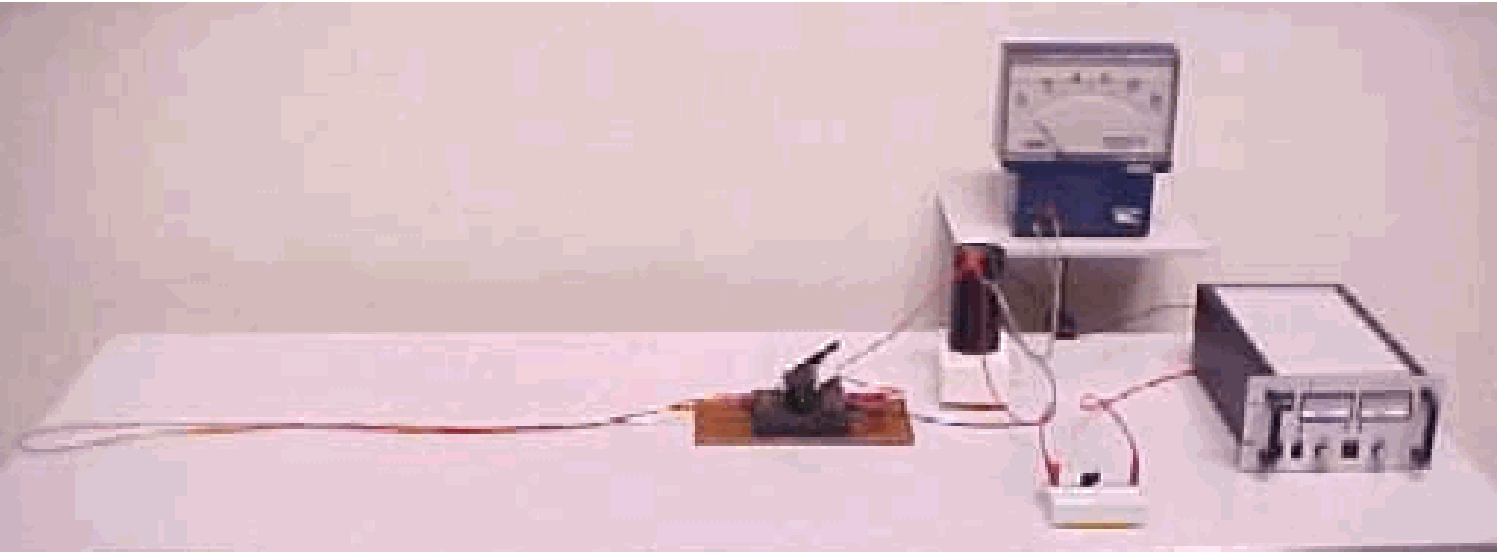
Fig. 515 .#
Equipment#
Two Neodymium magnets fixed in clamps.
Coil \(\left(n=500 ; I_{\max }=2.5 \mathrm{~A}\right)\) with a piece of red tape at one side. The coil is suspended by thin thread, so it can rotate easily (see Diagram).
Power supply, \(30\mathrm{~V}/10\mathrm{~A}\).
Switch and Two-way switch.
Array of compass-needles.
Paperclip (to show the presence of a magnetic field).
Camera and screen to show the demo to a large audience.
Safety#
The Neodymium magnets are very strong. If these magnets are not handled carefully, there is risk of serious injury. The magnets are fixed in clamps and stored with a thick piece of sheet between them.
-Carefully slide them apart when you use them, to prevent your fingers becoming trapped between them.
-Keep them several meters away from magnetic information carriers.
-Never operate the magnets in explosive environments, since they generate sparks!
Presentation#
Using the array of compass needles we show that there is a uniform magnetic field between the permanent magnets (see Figure 516).

Fig. 516 .#
Close to the magnets the field is strongly divergent/convergent (see Figure 517).
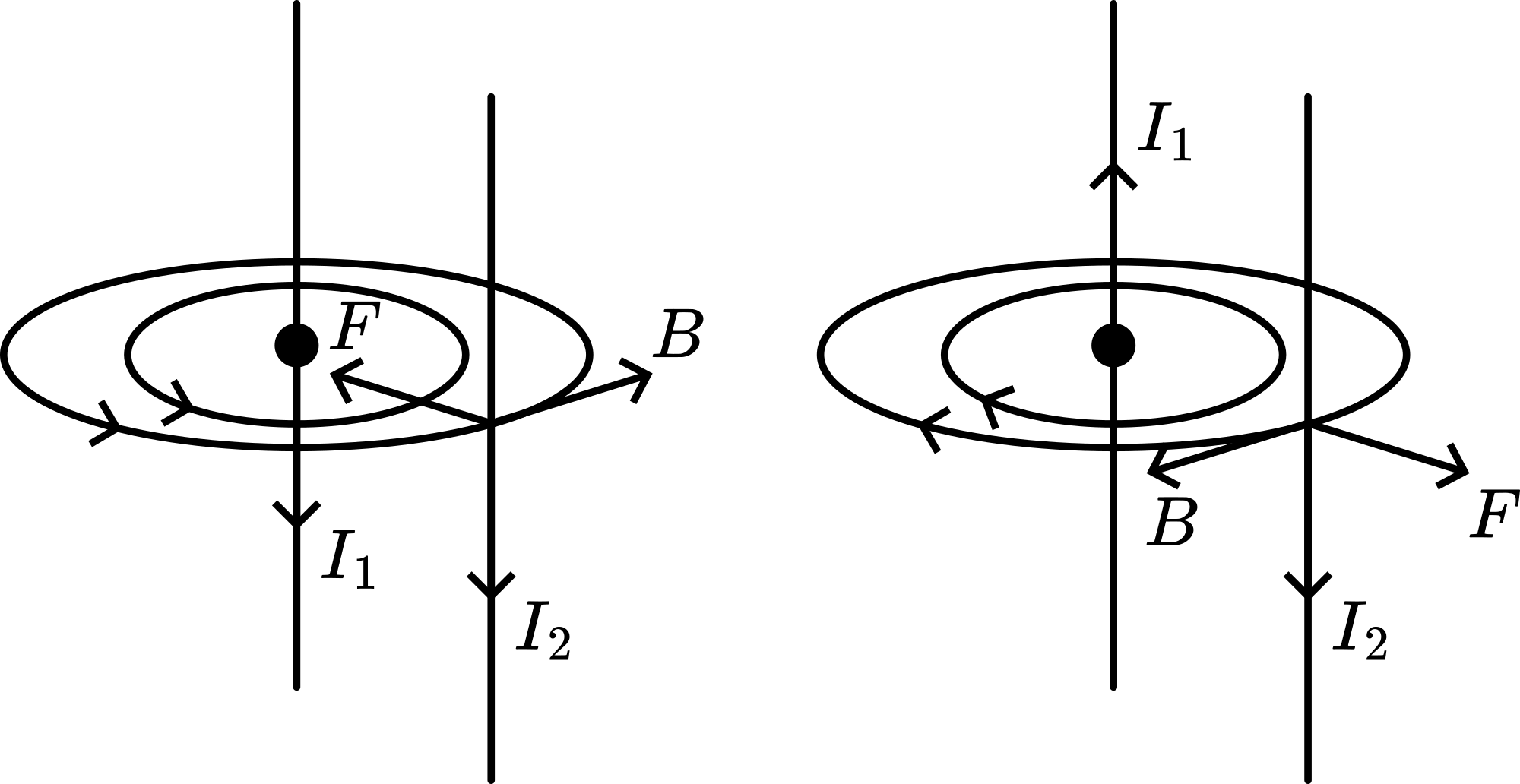
Fig. 517 .#
Then the coil is suspended between the two magnets (see Diagram). Connecting the power supply to the coil shows that the coil makes a rotation and lines up with the magnetic field (see Figure 518). There it remains at rest.
Conclusion is that in a homogeneous magnetic field a current carrying coil (a dipole) experiences a torque that lines up that dipole with the field. And in that uniform field there is no net force.
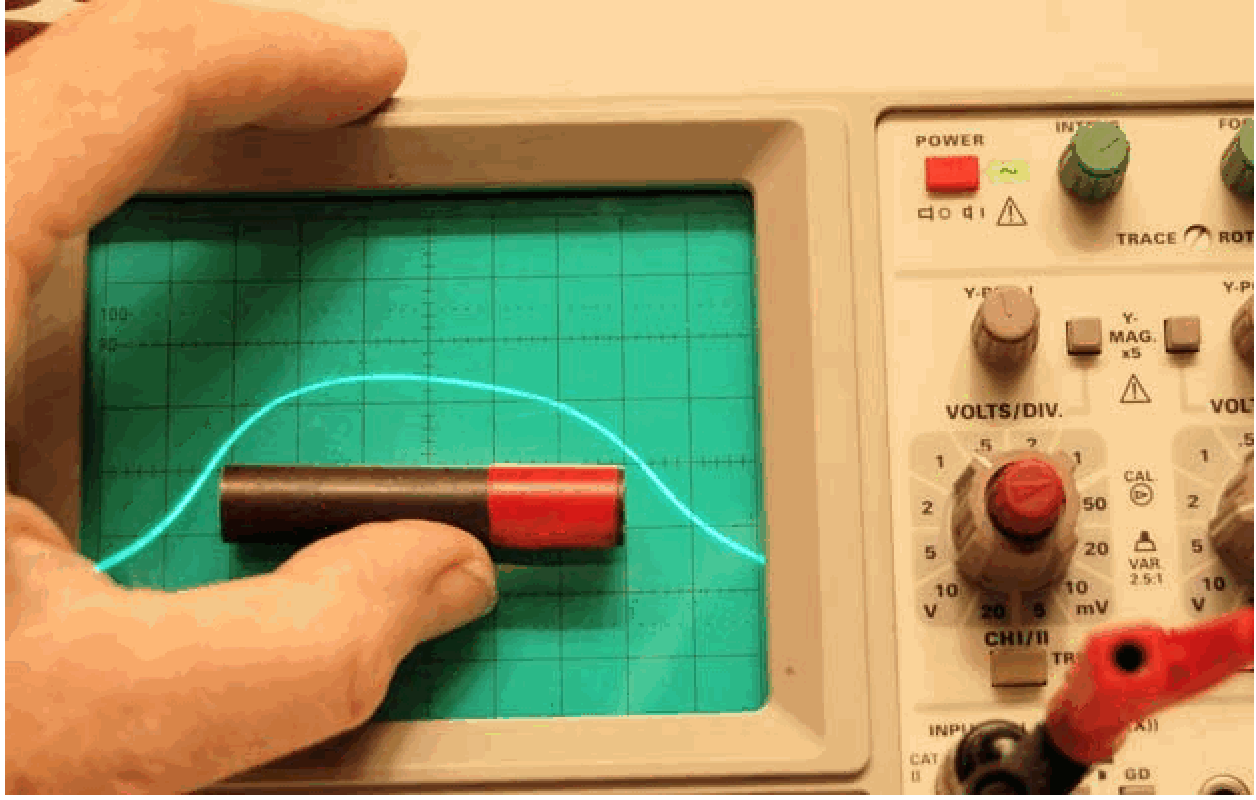
Fig. 518 .#
Then the coil is displaced a little from its central position: It attracts itself towards one of the magnets and sticks there (see Figure 519).
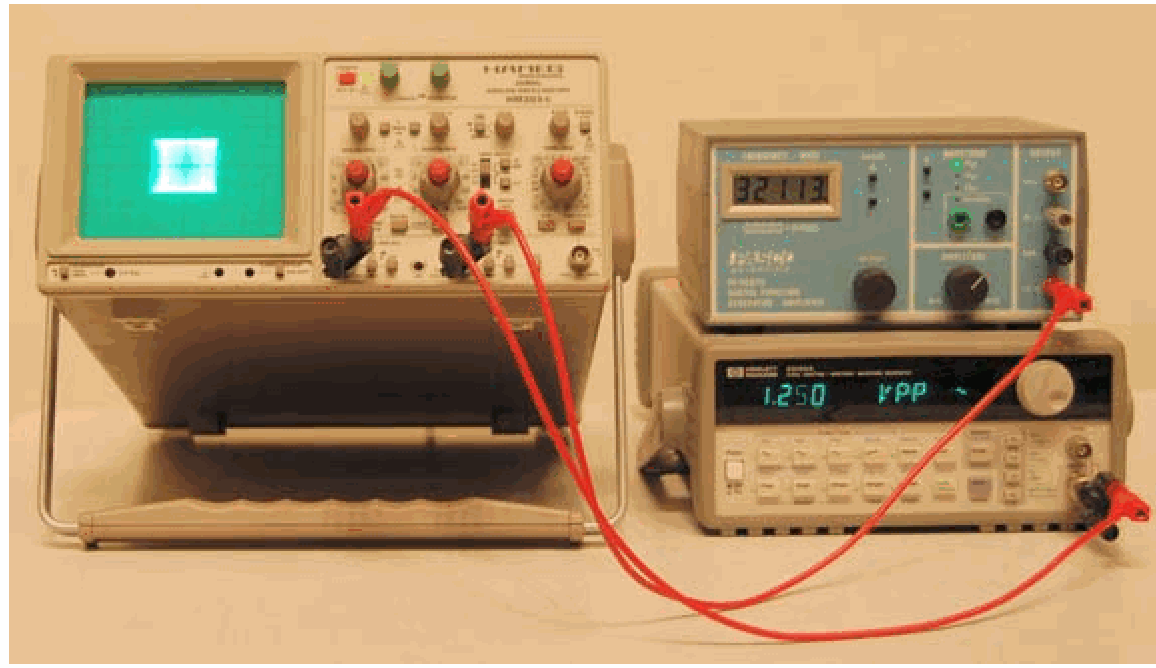
Fig. 519 .#
Conclusion is that in a non-uniform field there is a net force on a current loop (dipole).
Explanation#
There are Lorentz-forces on all sides of the coil. The forces on the bottom- and topside of the coil cancel (they only tend to stretch the coil). The two forces on the sides are also equal and opposite but they do generate a torque \(\vec{N} . \vec{N}=\vec{m} \times \vec{B}\) ( \(\vec{B}\) is the magnetic field and \(\vec{A}, \vec{A}\) being the area of the current loop).
When the field is non-uniform, there is a radial component of \(\mathrm{B}\) and there will be a net force towards the magnet (see Figure 520).
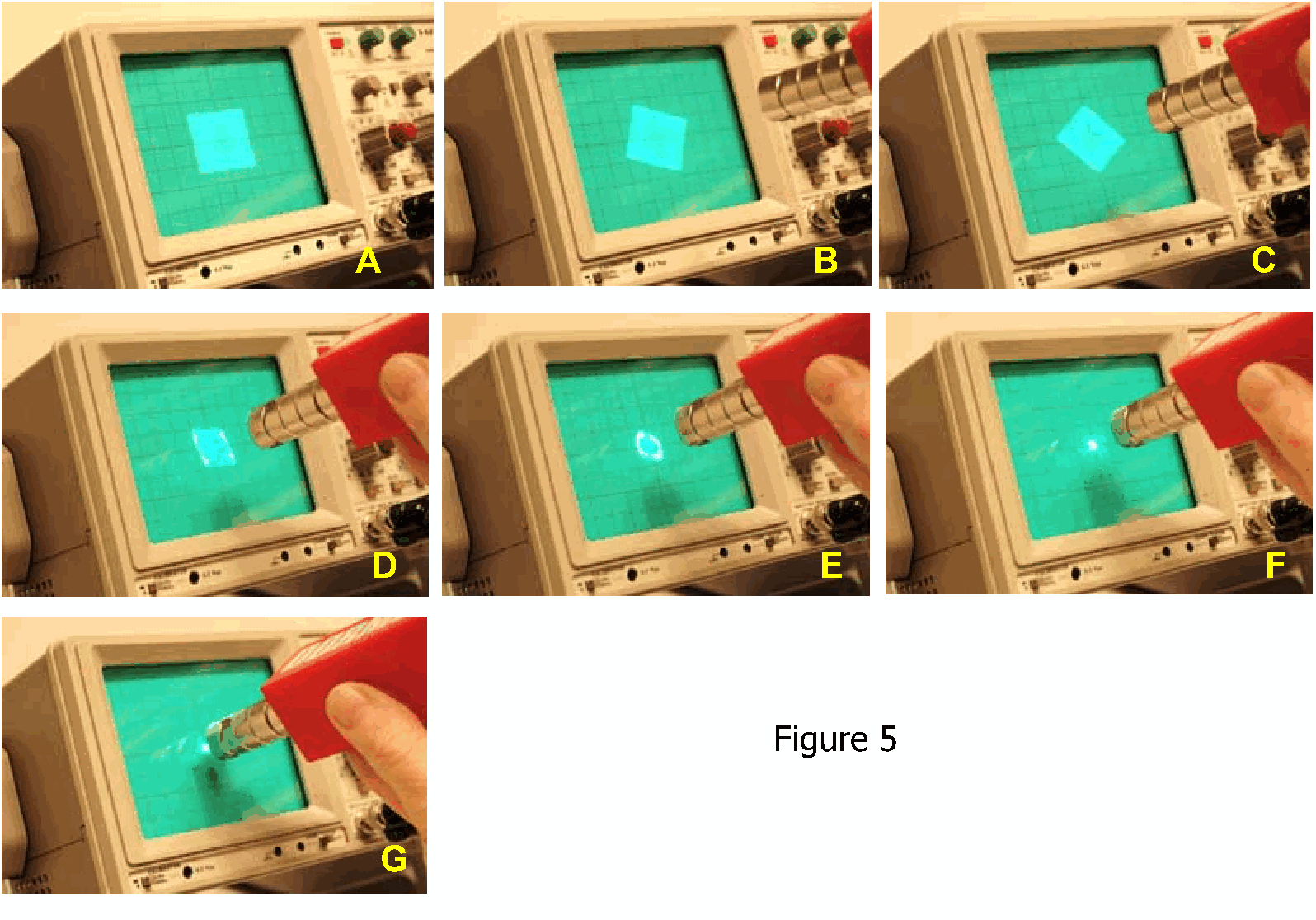
Fig. 520 .#
Remarks#
The lining up of a current loop in a uniform field is an example of what dipoles do in a material. So it can be used as an example to present para-magnetism.
Sources#
Griffiths, D.J., Introduction to Electrodynamics pag.255-258.
